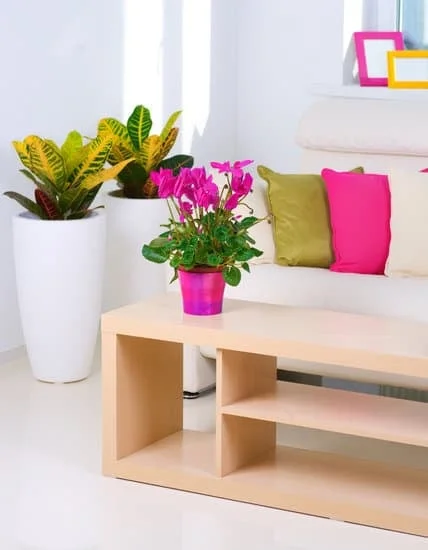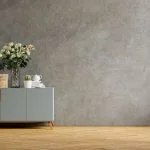Why do people decorate their homes with fruit? From ancient times to modern-day, the practice of using fruit as a decorative element in home decor has been prevalent. The history of fruit decoration in home decor is rich and diverse, with various cultural and regional influences shaping its significance. This article aims to explore the reasons behind this age-old tradition and delve into its symbolism, psychology, aesthetics, and practical aspects.
Fruit holds symbolic meaning in various cultures and traditions, making it a popular choice for home decoration. The different fruits used in decor carry unique symbolism and are often associated with prosperity, abundance, fertility, and good fortune. Understanding the symbolism behind these fruits can provide insight into why people choose to incorporate them into their homes.
There is also a psychological aspect to decorating with fruit. Studies have shown that the presence of natural elements, such as fruit, in living spaces can have a positive impact on mental well-being. The colors, scents, and visual appeal of fruit can create a sense of comfort and harmony within the home environment.
In addition to its symbolic and psychological significance, the aesthetic appeal of using fruit as decorative elements cannot be overlooked. Whether it’s a bowl of fresh lemons on a kitchen counter or a statement centerpiece of seasonal fruits on a dining table, incorporating fruit into home decor can add a pop of color and vibrancy to any space.
The Symbolism of Different Fruits in Home Decor
In home decor, the use of fruit as decorative elements has a long history and can be found in various cultures around the world. Different fruits hold different symbolism and meanings, making them popular choices for adding depth and meaning to interior design.
For example, lemons and oranges are often associated with freshness and vitality, making them popular choices for kitchens and dining areas. On the other hand, apples are often seen as a symbol of abundance and prosperity, making them a common choice for decor in living spaces.
Additionally, different cultures may ascribe unique meanings to certain fruits based on their traditions and beliefs. For example, in Chinese culture, pomegranates are often associated with fertility and good luck, while in Mediterranean cultures, grapes may symbolize fertility and wealth. Understanding the symbolism of these fruits can help individuals choose the right decorative elements to create a meaningful and harmonious living space.
Moreover, the symbolism of fruits in home decor can also be influenced by personal beliefs and preferences. Some individuals may choose to incorporate fruits that hold personal significance or represent specific values that they hold dear. This personalized approach to fruit decoration adds an extra layer of meaning to the home environment, making it more than just a visually pleasing space but also one that is rich in personal significance.
| Symbolic Fruit | Meaning |
|---|---|
| Lemons/Oranges | Freshness/Vitality |
| Apples | Abundance/Prosperity |
| Pomegranates | Fertility/Good Luck (Chinese) |
| Grapes | Fertility/Wealth (Mediterranean) |
The Psychology Behind Decorating With Fruit
When it comes to home decor, the use of fruit as a decorative element goes beyond just aesthetics. There is a psychology behind decorating with fruit that has been studied and analyzed by interior designers and psychologists alike. The presence of fruits in home decor can have a significant impact on the mood and mindset of the inhabitants.
Here are some psychological reasons why people decorate their homes with fruit:
1. **Sensory Stimulation:** Fruits are often associated with pleasant aroma, vibrant colors, and unique textures. When used in home decor, they can provide sensory stimulation that can uplift the mood and create a more inviting atmosphere.
2. **Connection to Nature:** In today’s fast-paced urban lifestyle, people often seek ways to reconnect with nature. Incorporating fruits into home decor allows individuals to bring elements of nature into their living spaces, creating a sense of tranquility and harmony.
3. **Symbolism:** Different fruits hold symbolic meanings in various cultures. For example, lemons are often associated with freshness and vitality, while pomegranates symbolize fertility and abundance. By incorporating these symbolic fruits into their homes, individuals can evoke specific emotions or aspirations.
Understanding the psychology behind decorating with fruit can help individuals make intentional choices when it comes to using fruits as decorative elements in their homes. Whether it’s for sensory stimulation or cultural symbolism, the presence of fruits in home decor can have profound effects on the overall well-being of the inhabitants.
The Aesthetics of Using Fruit as Decorative Elements
Fruit has been used as a decorative element in homes for centuries, adding a touch of nature and freshness to the living space. The aesthetics of using fruit as decor can bring vibrancy and color to any room, creating a visually appealing environment for both homeowners and visitors.
Some of the ways in which fruit can be incorporated as decorative elements in the home include:
- Displaying whole fruits in a decorative bowl or basket as a centerpiece on tables or countertops.
- Using fruit motifs in art, fabrics, and wallpapers for a playful and whimsical touch.
- Incorporating dried fruits such as citrus slices or apple rings into potpourri arrangements for a natural and fragrant appeal.
The use of fruit in home decor adds an organic and earthy element that can evoke feelings of comfort and warmth. The vibrant colors and varied textures of different fruits can create focal points within a room, adding visual interest and depth to the overall design scheme. Whether used sparingly or as a bold statement, fruit as decor reflects the natural beauty of the outdoors within the confines of indoor spaces.
Different Ways to Incorporate Fruit Into Home Decor
The use of fruit as a decorative element in home decor has been a popular choice for many homeowners, and there are various creative ways to incorporate fruit into the overall design of living spaces. From the kitchen to the dining room and even the living room, fruit can add a refreshing and vibrant touch to any home.
Fruit Bowls and Centerpieces
One of the most common ways to incorporate fruit into home decor is by using fruit bowls and centerpieces. Placing a colorful assortment of fruits in a decorative bowl can add a pop of color to any kitchen or dining area. Likewise, creating a lavish centerpiece using fruits like lemons, limes, or oranges can be an eye-catching focal point on a dining table or countertop.
Artwork and Prints
Another way to bring the beauty of fruits into home decor is through artwork and prints. Whether it’s a large canvas painting of a bowl of fruits or framed vintage prints of cherries or pears, incorporating fruit-themed artwork can add an elegant and classic touch to walls in any room.
Functional Decor Elements
In addition to traditional decorative methods, utilizing functional decor elements such as fruit-themed textiles, like kitchen towels or tablecloths with fruit patterns, can infuse a sense of charm and whimsy into the space. Fruit-shaped kitchen accessories such as ceramic lemon juicers or apple-shaped cutting boards also double as decorative accents while serving practical purposes.
By incorporating fruits in various creative ways throughout the home, homeowners can bring nature’s bounty indoors while adding an element of freshness and vitality to their living spaces. Whether displayed in traditional ways like in bowls or utilized as part of functional decor elements, fruits are sure to enliven any room with their vibrant colors and natural appeal.
DIY Fruit Decor Projects for the Home
Do-it-yourself (DIY) fruit decor projects are a creative and cost-effective way to incorporate natural elements into home decor. From simple crafts to more elaborate designs, there are numerous ways to use fruits as decorative elements in the home. One popular DIY project is creating citrus fruit centerpieces for dining tables or kitchen islands. By arranging lemons, limes, and oranges in a bowl or vase, homeowners can add a pop of color and freshness to their living spaces.
Another fun DIY project is making fruit-inspired candles. By hollowing out fruits such as apples or pears and inserting a small candle, individuals can create unique and aromatic decorations for their homes. Additionally, crafting fruity wall art using dried slices of fruits such as oranges or grapefruits can add an organic and visually interesting touch to any room.
For those with a green thumb, creating a mini indoor herb garden using mason jars and incorporating fruits like strawberries or cherry tomatoes can be a delightful DIY project that not only adds beauty to the home but also provides fresh produce for cooking. These projects allow individuals to bring nature indoors and infuse their living spaces with the vibrant colors and scents of various fruits.
Cultural and Regional Influences on Fruit Decorations in Homes
Throughout history, the use of fruit as a decorative element in homes has been influenced by various cultural and regional factors. Different cultures and regions have varying traditions, beliefs, and customs surrounding the use of fruit in home decor. These influences have played a significant role in shaping the ways in which fruit is incorporated into interior design.
Traditional Cultural Practices
In many cultures, the display of fruit in the home is often associated with hospitality, abundance, and prosperity. For example, in some Asian cultures, the presence of fruits like oranges and tangerines during celebrations or special occasions symbolizes good luck and fortune. In Mediterranean countries, displaying bowls filled with fresh fruits such as grapes and pomegranates is a symbol of fertility and wealth.
Regional Availability of Fruit
The availability of certain types of fruits in different regions has also influenced their use in home decor. For instance, tropical regions may incorporate pineapples, coconuts, and mangoes into their decor due to the abundance of these fruits. In contrast, regions with temperate climates may lean towards apples, pears, and berries for their decorative purposes.
Historical Influences
The historical significance of fruit can also impact its use as a decorative element in homes. In ancient times, fruit was often depicted in art and architecture as a symbol of fertility and abundance. This historical association has carried over into modern interior design practices, particularly in regions that have a deep connection to their cultural heritage.
Understanding the cultural and regional influences on fruit decorations can provide insight into why people choose to incorporate these natural elements into their homes. By recognizing these influences, individuals can appreciate the rich symbolism and historical significance behind using fruit as a form of decoration in their living spaces.
The Benefits of Decorating With Fruit in the Home
Decorating with fruit in the home comes with a plethora of benefits that go beyond just aesthetic appeal. Not only does it add a natural and fresh touch to your interior design, but it also promotes healthy eating habits. Placing a bowl of fresh fruit on the dining table or kitchen counter can serve as a visual reminder to snack on something nutritious rather than reaching for unhealthy options.
In addition, using fruits as decorations allows for an ever-changing color palette in your home. As fruits ripen and change color, they can bring a new burst of vibrancy to your living space. This natural transformation keeps the decor feeling dynamic and fresh without having to spend money on new items.
Moreover, the fragrance from certain fruits like lemons, oranges, and apples can create a refreshing and welcoming atmosphere throughout the home. The natural aroma adds another dimension to the sensory experience of being in a space that is decorated with fruit.
| Benefit | Description |
|---|---|
| Promotes healthy eating habits | Visual reminder to choose nutritious snacks |
| Provides ever-changing color palette | Natural transformation as fruits ripen and change color |
| Adds natural fragrance | Lemons, oranges, and apples creating a refreshing atmosphere |
Overcoming Challenges in Decorating With Fruit
Decorating with fruit can bring a fresh and natural element to home decor, but it also comes with its own set of challenges. One common challenge in using fresh fruit as part of home decor is its perishable nature. Since fruits tend to spoil quickly, it can be difficult to maintain the aesthetic appeal of the decorations over time. Additionally, certain fruits may attract insects or pests, which can create further maintenance issues for homeowners.
Another challenge in decorating with fruit is ensuring that it complements the overall design scheme of the home. While some fruits may work well with specific decor styles and color schemes, others may clash or appear out of place. It’s important for individuals to carefully consider how they integrate fruit into their home decor to ensure that it enhances the space rather than detracts from it.
Incorporating fruit into home decor can also present challenges related to safety and cleanliness. For instance, if fresh fruit is used in areas where there is a risk of slipping or falling, such as on tabletops or near walking paths, it’s essential to take precautions to prevent accidents. Additionally, the presence of fresh fruit in the home requires regular cleaning and maintenance to avoid attracting unwanted pests and maintaining a hygienic living environment.
Tips for Maintaining Fruit Decor in the Home
In conclusion, decorating with fruit in the home has a long history, with various cultural and regional influences shaping its significance and symbolism. The psychology behind using fruit as decorative elements highlights the connection between nature and well-being, while the aesthetics of fruit decor adds a fresh and vibrant touch to any living space. From DIY projects to different ways of incorporating fruits into home decor, there are plenty of creative options for individuals to explore.
However, challenges may arise when it comes to maintaining fruit decor in the home. To overcome these challenges, it is important to choose fruits that have a longer shelf life and require minimal maintenance. Additionally, regularly inspecting and replacing fruits to avoid spoilage is essential in preserving the aesthetic appeal of fruit decor in the home.
Ultimately, the benefits of decorating with fruit in the home are numerous – from adding color and texture to promoting a sense of abundance and vitality. By understanding the history, symbolism, psychology, and practical tips for maintaining fruit decor, individuals can enhance their living spaces with this natural and timeless form of decoration.
Whether it’s through traditional arrangements or modern interpretations, incorporating fruit into home decor can bring a sense of warmth and freshness that uplifts the ambience of any room.
Frequently Asked Questions
Why Do People Decorate With Fruit at Christmas?
People decorate with fruit at Christmas because it has been a tradition for centuries. The bright colors and natural elements of fruits such as oranges, apples, and pomegranates add to the festive atmosphere of the holiday season. Additionally, in many cultures, the use of fruit in decorations symbolizes prosperity and abundance, which are themes often associated with Christmas celebrations.
Why Do Christians Decorate Their Homes During Christmas?
Christians decorate their homes during Christmas as a way to celebrate the birth of Jesus Christ. The decorations, including the Christmas tree, wreaths, and nativity scenes, serve as visual reminders of the religious significance of the holiday.
It is also a way for families to create a spiritual atmosphere in their homes and to honor the traditions that have been passed down through generations.
Why Do People Like to Decorate Their Homes?
People like to decorate their homes for various reasons, including celebrating holidays and special occasions, expressing their personal style, and creating a welcoming environment for themselves and their guests. Home decorations can also evoke feelings of joy and nostalgia, particularly during festive seasons like Christmas.
Whether it’s through seasonal decor or year-round adornments, decorating allows people to infuse their living spaces with beauty and meaning.

I’m thrilled to be your companion on this exciting journey through the world of home decor and design. With a passion for turning houses into homes and a keen eye for the finer details, I’m here to help you transform your living spaces into beautiful, functional, and meaningful havens.





